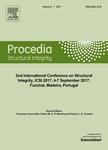版权所有:内蒙古大学图书馆 技术提供:维普资讯• 智图
内蒙古自治区呼和浩特市赛罕区大学西街235号 邮编: 010021

作者机构:SINTEF Industry Dept. of Materials Integrity and Welding 7456 Trondheim Norway Department of Mechanical and Industrial Engineering Norwegian University of Science and Technology 7491 Trondheim Norway
出 版 物:《Procedia Structural Integrity》
年 卷 期:2018年第13卷
页 面:1514-1520页
主 题:Fatigue Crack Growth Hydrgen Embrittlement Steel
摘 要:It is well known that the presence of hydrogen in ferrous materials promotes both static fracture and affect the material fatigue crack growth rates. The latter is often referred to as Hydrogen Enhanced Fatigue Crack Growth Rate (HE-FCGR) which defines the reduction of crack growth resistance of the material under cyclic stresses when hydrogen is present. When it comes to the determination of the life of components exposed to hydrogen it is therefore of paramount importance to establish such hydrogen induced variation in crack speed in the material in order to avoid unexpected catastrophic failures. In this study the fatigue crack growth rate was determined for a Fe-3wt%Si alloy. Compact tension specimens were used to determine the Paris regime of the fatigue crack growth rate curve of the material. Two environmental conditions were investigated: laboratory air and in-situ electrochemically charged hydrogen. Different mechanical conditions, in terms of load ratio (R=0.1 and R=0.5) and test frequency (f=0.1 Hz, 1 Hz and 10 Hz), were used under electrochemically charged hydrogen conditions. The results show that compared to the specimens tested in air, there is a clear detrimental effect of H for the specimens tested in hydrogen, in terms of accelerated crack growth. The strength of the impact of hydrogen in enhancing the fatigue crack growth rates of the Fe-3wt%Si alloy clearly depends on the test conditions. Fractographic investigations were also used to unveil the mechanisms involved in the process leading to accelerate crack growth in presence of hydrogen.